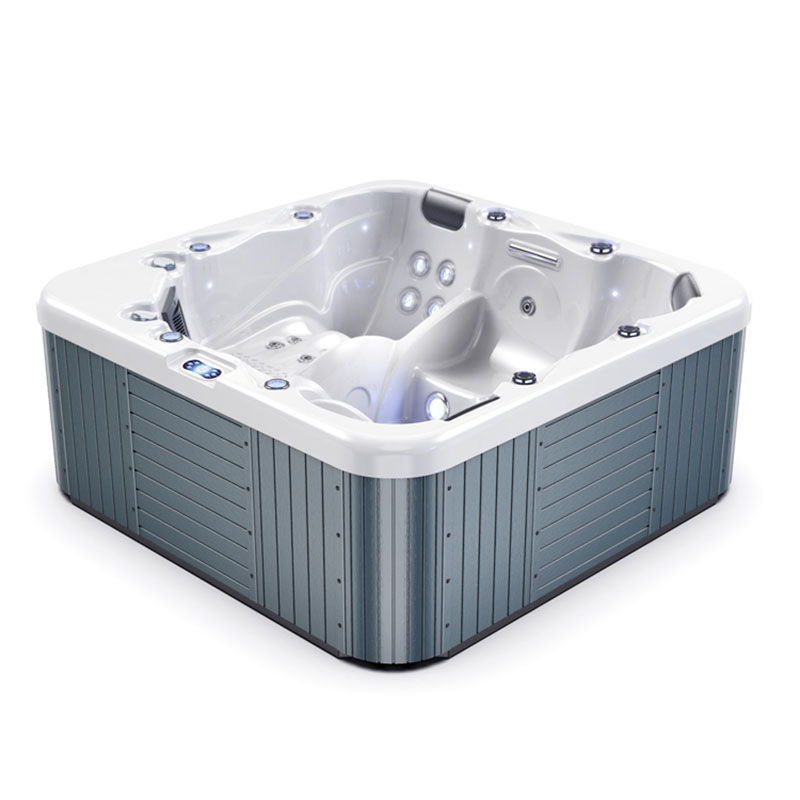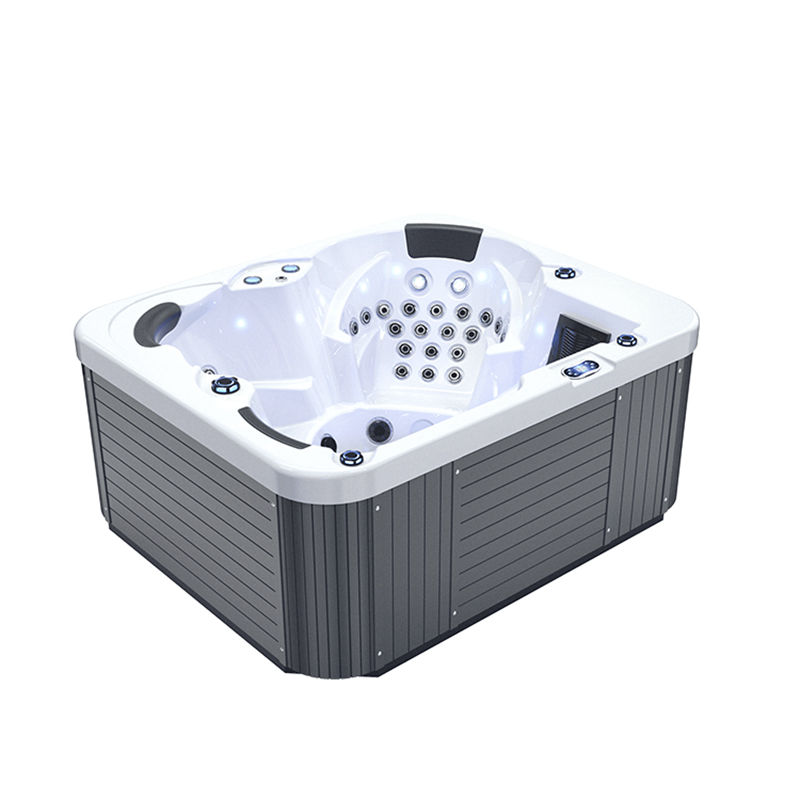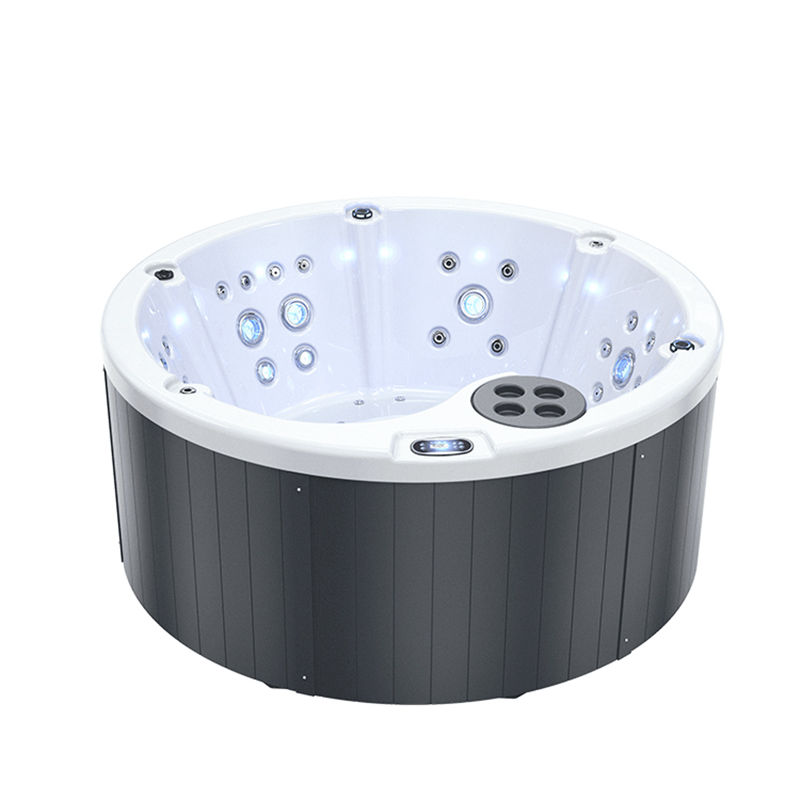Outdoor whirlpool hot tubs have become a popular choice for modern family leisure and health care, not only helping to relieve stress and relax muscles, but also providing health care. In order to ensure the clean and safe water quality of the whirlpool hot tub and maintain the stability of its functions, correct water treatment is essential.
In the maintenance process of the whirlpool hot tub, there is an important operation that is often mentioned, namely "whirlpool hot tub shock" (Shock). So, what is whirlpool hot tub shock? How to properly shock an outdoor whirlpool hot tub?
This article will explain in detail the concept, function, correct use of outdoor whirlpool hot tub shock, and how to ensure the safety and cleanliness of the bathtub water.
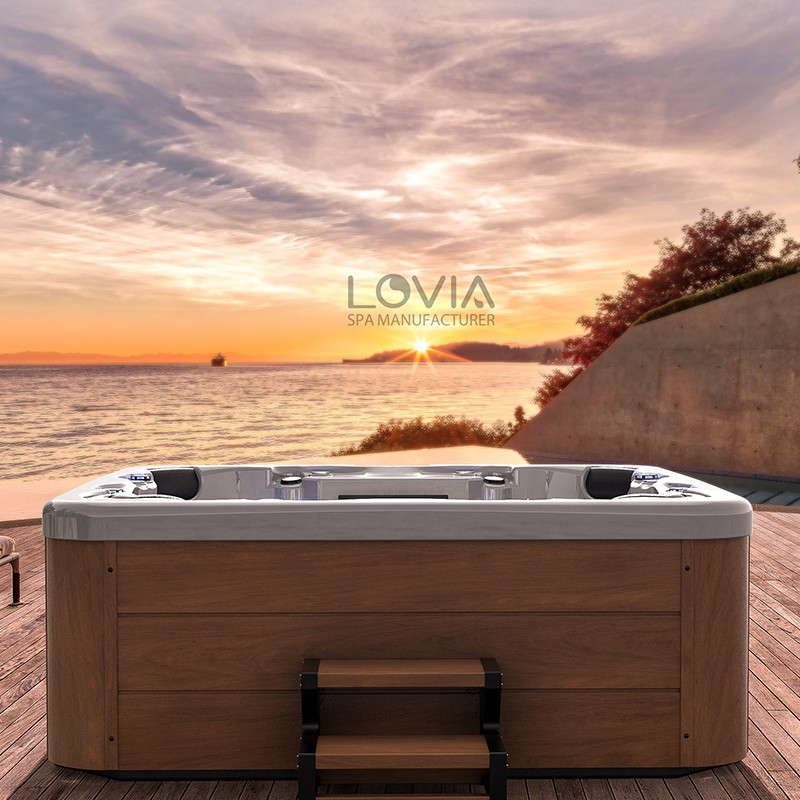
What is whirlpool hot tub shock?
"Whirlpool hot tub shock" (Spa Shock), sometimes also called "water shock treatment", is a treatment method used to clean and restore water quality. By adding a large amount of oxidants to the bathtub water, the shock treatment aims to decompose organic pollutants and chemical residues in the water, restoring the water to a clear and hygienic state.
The water in the outdoor whirlpool hot tub is prone to the growth of bacteria, microorganisms and the accumulation of organic matter, such as sweat, skin cells, cosmetics and natural oils, due to the continuous high temperature, humidity and closed environment. These organic substances can cause the water quality to deteriorate and reduce the effectiveness of disinfectants (such as chlorine or bromine). Regular shock treatment can help remove these organic pollutants and ensure the water quality is clean.
The core of shock treatment is to add oxidants to accelerate the decomposition process of these harmful substances. There are two common shock agents: chlorine-based shock agents and non-chlorine-based shock agents.
1. Chlorine-based shock agent
Chlorine-based shock agent is the most traditional shock treatment method, usually using high concentrations of chloride to quickly decompose organic pollutants and disinfection by-products in water. Chlorine is a strong oxidant that can effectively kill microorganisms, bacteria and viruses in water, and can also help decompose those chlorine compounds (i.e. "chloramines") that have exhausted their effectiveness, which can cause pungent odors and irritation.
2. Non-chlorine shock
Non-chlorine shocks are usually made from peroxides, such as persulfates. They do not leave a strong odor like chlorine does, nor do they irritate the skin or eyes. The advantage of non-chlorine shocks is that they break down organic contaminants just as quickly, but without significantly increasing the chlorine content in the water. Therefore, a whirlpool hot tub that uses non-chlorine shocks can be reused quickly, while a chlorine shock requires waiting for the chlorine content to drop to a safe level before it can be used.
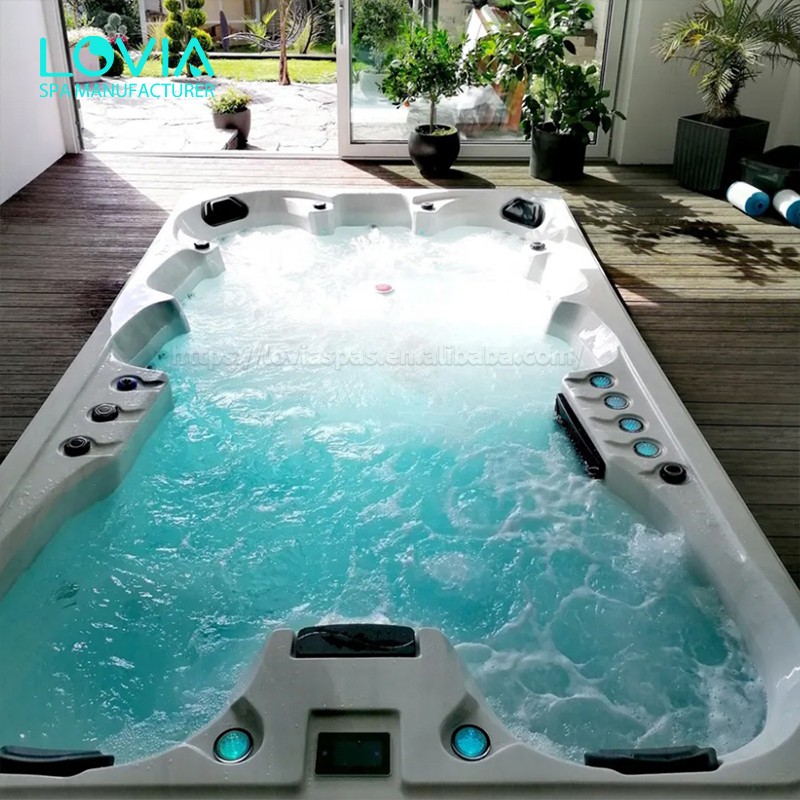
Why does a whirlpool hot tub need shock treatment?
Shock treatment is a necessary step to maintain the stability of the whirlpool hot tub water quality, especially when the tub is frequently used, external contaminants enter the water, or the water quality begins to become turbid.
1. Decomposition of organic matter
Whether it is sweat, cosmetics, skin oils brought in by users, or dust and leaves from the outside, these organic substances will accumulate in the water and react with the disinfectant, reducing the disinfection effect. If these organic substances are not treated in time, they will not only cause the water quality to deteriorate, but may also breed bacteria and increase health risks. Shock treatment can quickly oxidize and decompose these organic substances to ensure clean water.
2. Restore the effectiveness of disinfectants
Common whirlpool hot tub disinfectants such as chlorine and bromine react with organic matter in the water to produce compounds called "chloramines" or "bromines", which have poor disinfection effects and emit a pungent odor. When these compounds accumulate to a certain amount, the disinfection effect in the water will be significantly reduced. Through shock treatment, oxidants can break down these compounds and restore the original effectiveness of the disinfectant.
3. Improve water clarity
When the water quality of the whirlpool hot tub begins to become turbid, it usually means that there are too many particles, bacteria or other contaminants in the water. Through shock treatment, these impurities can be removed and the water can be restored to a transparent and clear state.
4. Prevent bacterial growth
The warm environment of the outdoor whirlpool hot tub is very suitable for the reproduction of bacteria, viruses and other microorganisms. Even if disinfectants have been added regularly, microorganisms may still grow under the protection of organic matter. Shock treatment can ensure that these microorganisms are thoroughly oxidized and killed, keeping the water hygienic.
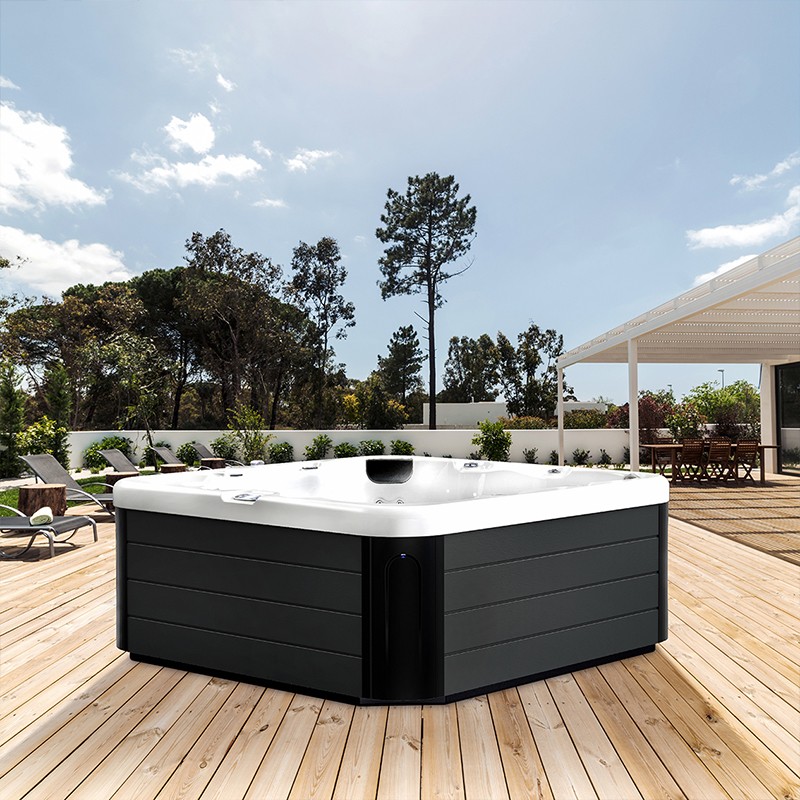
How to properly perform shock treatment for whirlpool hot tub?
To ensure the water quality of whirlpool hot tub is stable and safe, the correct shock treatment steps are essential. The following is a complete shock treatment process:
1. Check water quality
Before performing shock treatment, use a professional water quality test tool to test the content of disinfectants (such as chlorine or bromine), pH and alkalinity in the water. Ideal water quality should be maintained in the following ranges:
· Chlorine: 1-3 ppm,
· Bromine: 3-5 ppm,
· pH: 7.2-7.6,
· Total alkalinity: 80-120 ppm.
Ensuring that the pH and alkalinity in the water are within a reasonable range will help the shock agent to work best. If the pH is too high or too low, the effectiveness of the shock agent may be affected, resulting in ineffective decomposition of organic matter.
2. Choose a shock agent
Choose the right type of shock agent according to your needs. If you want to quickly restore water quality and reduce irritating odors, chlorine-based shock agents may be the most effective choice; if you don’t like the taste of chlorine or want to use the bathtub quickly, non-chlorine shock agents are a gentler alternative.
3. Prepare the shock agent
Prepare the correct amount according to the instructions on the shock agent package. Generally, the amount of shock agent used depends on the capacity of the whirlpool hot tub and the water quality. If the water quality is extremely poor or turbid, the amount of shock agent can be appropriately increased.
4. Add shock agent
Sprinkle the shock agent evenly into the outdoor whirlpool hot tub and turn on the tub's circulation system to ensure that the shock agent can be quickly and evenly distributed in the water.
It is important to note that when performing shock treatment, it is necessary to ensure that the disinfectant content in the water is within a safe range. Excessive disinfectant may cause irritation to the skin and eyes, and may also damage the components of the outdoor whirlpool hot tub.
5. Let the water circulate
After the shock agent is sprinkled into the water, keep the tub's circulation system turned on for at least 20 minutes to 1 hour to allow the shock agent to fully mix and work. During this period, you can use a lid to partially cover the tub to prevent the chemicals in the water from evaporating and ensure that the shock agent acts more effectively on organic matter in the water.
6. Waiting time after shocking
If you use a chlorine-based shocking agent, you need to wait for a period of time (usually about 24 hours) after the shock treatment to allow the chlorine content in the water to drop to a safe level (1-3 ppm) before using the whirlpool hot tub. If you use a non-chlorine shocking agent, you generally only need to wait 20-30 minutes before using the tub again.
7. Retest the water quality
After the shock treatment, use the water quality test kit again to test the disinfectant content, pH and alkalinity in the water. If the water quality indicators are still not within the ideal range, you may need to adjust the disinfectant concentration or perform another shock treatment.
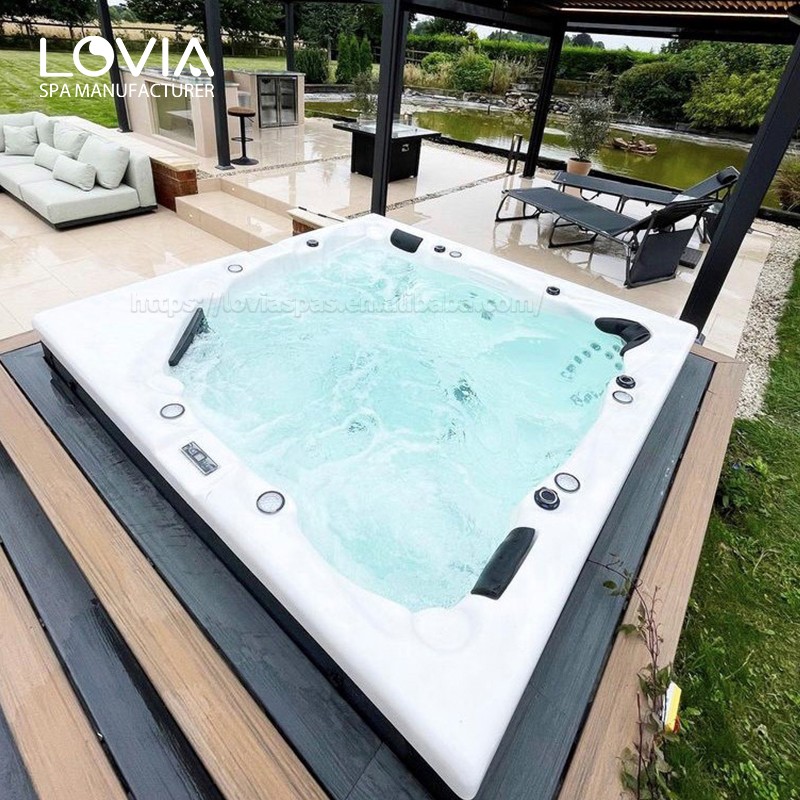
How often do you shock the hot tub?
The frequency of shock treatment depends on how often the whirlpool hot tub is used and the water quality. It is generally recommended to shock the hot tub once a week, especially if the hot tub is used frequently or the water quality becomes cloudy. If the whirlpool hot tub is not used for a long time, the shock treatment interval can be appropriately extended, but it is recommended to be performed at least once every two weeks.
In addition, additional shock treatment should also be performed in the following cases:
· The water suddenly becomes turbid or has an odor,
· The whirlpool hot tub is used frequently, especially after multiple people use it,
· The water quality test results show that the disinfectant is not effective.
What are the precautions for shocking a whirlpool hot tub?
In order to ensure the effectiveness and safety of shock treatment, the following points should be noted during operation:
1. Keep good ventilation: When performing shock treatment on an outdoor whirlpool hot tub, try to do it in a well-ventilated environment to avoid inhaling excessive chemicals.
2. Avoid excessive use: Use shock agents strictly in accordance with the product instructions. Excessive use of chemicals may pose a risk to health and damage the bathtub equipment.
3. Prevent skin allergies: When handling chemicals, it is recommended to wear protective gloves to avoid direct skin contact with the shock agent to prevent allergies or irritation.
How do you ensure the quality of your spa products?
We implement strict quality control at every production stage, from raw material sourcing to final water testing. Our products are manufactured according to ISO9001 quality standards and certified under CE, ETL, SAA, ROHS, and REACH. Every spa undergoes functional testing, electrical safety inspection, and hydraulic performance evaluation before shipment. High quality is not just our promise—it’s our company foundation.


